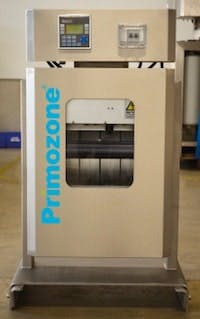Primozone has received an order to supply ozone generators for a full-scale pilot project at the Herlev Hospital in Denmark. The aim of the project is to find a solution for removing pharmaceutical residue from hospital wastewater already at the source.
Hospital wastewater contains a complex mixture of environmentally harmful substances like pharmaceuticals, contagious pathogens, resistant bacteria and other chemicals. Today these substances end up in the receiving waters, as these are not fully removed at the municipal wastewater treatment plant.
The intent of the project is to be able to test a system that will clean the hospital wastewater at the source. This is believed to have both economic and environmental advantages.
Ozone oxidation is one of a few cleaning techniques that are powerful enough to remove pharmaceutical residue. The pilot project at the Herlev hospital is built on a combination of different technologies that in several steps will clean and treat the wastewater. Ozone produced by two Primozone GM6 ozone generators is combined with activated carbon and specifically aimed at removing the pharmaceutical residue. Apart from the ozone generators Primozone is also supplying a SC system controller and off-gas measuring equipment, both used to control the ozone dosing.
The project is led by Grundfos and is financed by Herlev Hospital/the Capitol Region of Denmark, the Business Innovation Fund, the municipal WWTP Lynettefællesskabet and the Copenhagen and Herlev municipalities.
Source: Primozone


